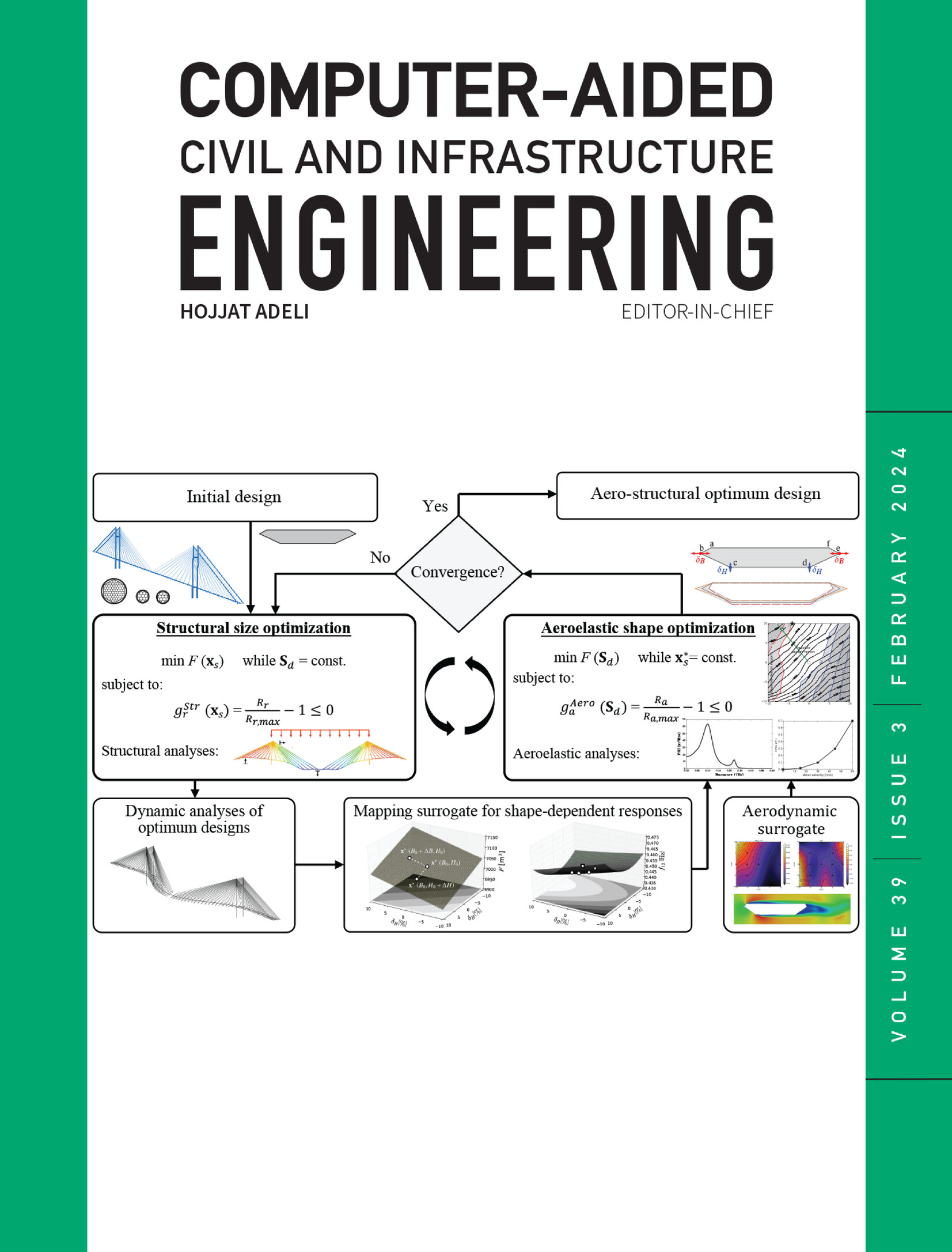基于车辆轨迹的高速公路多重交通异常检测集成框架
IF 8.5
1区 工程技术
Q1 COMPUTER SCIENCE, INTERDISCIPLINARY APPLICATIONS
引用次数: 0
摘要
快速准确地识别高速公路上的交通异常至关重要。本研究提出了一种基于车辆轨迹的高速公路多重交通异常检测的集成框架。该框架解决了宏观拥堵模式和微观驾驶行为,提供了一个全面的解决方案,可以在统一的框架内同时检测多种异常情况。开发的框架包括三个主要部分:数据采集和预处理、车辆轨迹识别和交通异常检测。前两个组件负责获取高速公路上的实时车辆轨迹。有了这些轨迹信息和持续监控的短期交通状态,后一组件寻求通过针对每个交通异常的定制子算法同时检测所有交通异常。对于宏观异常检测,提出了一种通过构造局部冲击波来检测走走停停波的算法,以捕捉交通拥堵波在有限视场情况下的传播情况。在微观异常检测方面,引入了动态背景交通状态更新机制,使框架能够自适应地整合历史交通数据和环境因素。此外,设计了一种基于无监督方法的双层叠加框架,以整合不同的特征类型并解决视角失真问题。所开发的框架在高速公路的模拟和真实数据实验中进行了测试。结果证实了该方法在综合框架内同时检测多个交通异常方面的有效性。本文章由计算机程序翻译,如有差异,请以英文原文为准。
An integrated framework for multiple traffic anomalies detection on highways using vehicle trajectories
Fast and accurate identification of traffic anomalies on highways is of utmost importance. This study presents an integrated framework for multiple traffic anomaly detection on highways using vehicle trajectories. The framework addresses both macroscopic congestion patterns and microscopic driving behaviors, offering a comprehensive solution that simultaneously detects multiple anomalies within a unified framework. The developed framework comprises three main components: data acquisition and preprocessing, vehicle trajectory recognition, and traffic anomaly detection. The former two components are responsible for acquiring real-time vehicle trajectories on highways. With such trajectory information and the continuously monitored short-term traffic state, the latter component seeks to simultaneously detect all the traffic anomalies via a tailored sub-algorithm for each of them. For macroscopic anomaly detection, an algorithm for detecting stop-and-go waves by constructing localized shockwaves is proposed to capture the propagation of traffic congestion waves even in limited field-of-view scenarios. For microscopic anomaly detection, a dynamic background traffic state updating mechanism is introduced, allowing the framework to adaptively integrate historical traffic data and environmental factors. Additionally, a double-layer stacking framework based on unsupervised methods is designed to integrate diverse feature types and addressing perspective distortions. The developed framework is tested in experiments on both simulation and real-world data on highways. The results confirm its effectiveness in the simultaneous detection of multiple traffic anomalies within an integrated framework.
求助全文
通过发布文献求助,成功后即可免费获取论文全文。
去求助
来源期刊
CiteScore
17.60
自引率
19.80%
发文量
146
审稿时长
1 months
期刊介绍:
Computer-Aided Civil and Infrastructure Engineering stands as a scholarly, peer-reviewed archival journal, serving as a vital link between advancements in computer technology and civil and infrastructure engineering. The journal serves as a distinctive platform for the publication of original articles, spotlighting novel computational techniques and inventive applications of computers. Specifically, it concentrates on recent progress in computer and information technologies, fostering the development and application of emerging computing paradigms.
Encompassing a broad scope, the journal addresses bridge, construction, environmental, highway, geotechnical, structural, transportation, and water resources engineering. It extends its reach to the management of infrastructure systems, covering domains such as highways, bridges, pavements, airports, and utilities. The journal delves into areas like artificial intelligence, cognitive modeling, concurrent engineering, database management, distributed computing, evolutionary computing, fuzzy logic, genetic algorithms, geometric modeling, internet-based technologies, knowledge discovery and engineering, machine learning, mobile computing, multimedia technologies, networking, neural network computing, optimization and search, parallel processing, robotics, smart structures, software engineering, virtual reality, and visualization techniques.

 求助内容:
求助内容: 应助结果提醒方式:
应助结果提醒方式:


